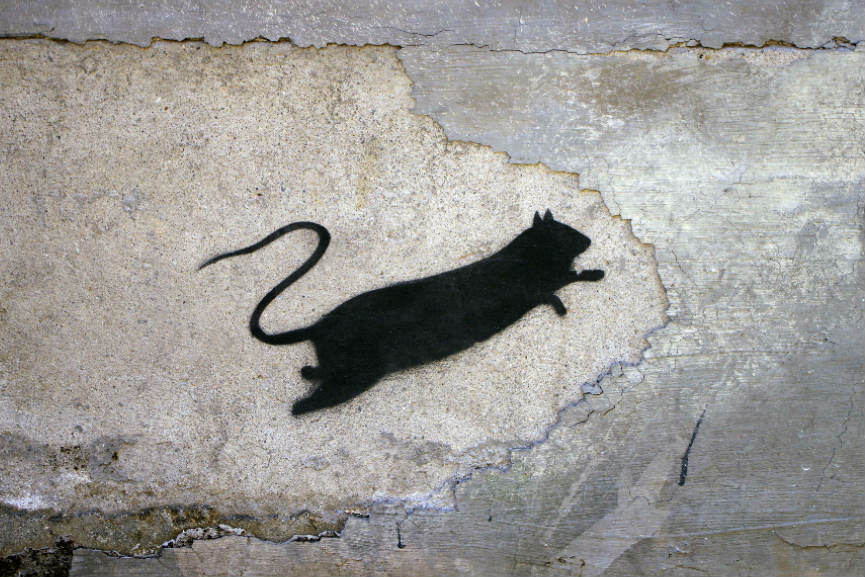Twenty years before Banksy‘s mouse, there was Blek Le Rat‘s mouse.
Yes, it was Blek Le Rat, the father of Stencil Art, who created the first stencil of a mouse on a Paris wall in 1981 and made it his trademark. No one had done this before, and stencils were not yet used as a form of urban art. Blek, born Xavier Prou, a French artist, was the first to have this intuition: inspired by the graffiti seen in New York and the old fascist propaganda stencils seen in Padua in the 1960s, he creates a shape cut out of cardboard and sprays on a wall of an abandoned building the silhouette of a mouse. This gesture was so revolutionary not only because it started the artist’s career, but because it marked the birth of the greatest artistic movement of the twentieth century: Street Art.
But why a mouse? As Blek defines them, mice are “the only free animals living in any city in the world.” It is a resistant animal and a bearer of pandemics, just like the unstoppable street art that spreads like wildfire through the streets of cities. Symbol of public and widespread art, of freedom, of the street, of contamination. Furthermore, “rat” is the anagram of “art“.
Blek’s artistic production will then extend to large-format stencils that will populate the streets of Paris and many other cities around the world over the years. When his English heir, Banksy, begins to trace the streets of Bristol, he himself will admit: “Every time I think I’ve painted something slightly original, I find out that Blek le Rat has done it as well, only twenty years earlier.”

